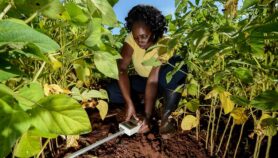Send to a friend
The details you provide on this page will not be used to send unsolicited email, and will not be sold to a 3rd party. See privacy policy.
[SANTIAGO] Latin American scientists are producing more scientific papers and having those papers cited more widely, according to a recent study.
From 2000 to 2010, the number of scholarly papers published in journals indexed in Scopus bibliographic database and authored by Latin American researchers rose by more than nine per cent a year, according to the study published in November in Research Trends.
The region’s share of global papers increased by nearly 70 per cent in the same period.
SPEED READ
- Publications and citations are increasing in Latin America
- This growth is uneven across the region and different sciences
- But the number of citations, a proxy for quality, is still below the world average
"The overall volume of scientific publications in the world is growing at around three per cent per year, so nine per cent is a fast active growth in comparison," Sarah Huggett, the study’s author and publishing information manager at Elsevier, tells SciDev.Net.
Despite this, in 2010 Latin America produced just 4.4 per cent of the world’s scholarly papers. The share in some areas was higher: nearly ten per cent in dentistry, for example, and nearly 11 per cent in agricultural and biological sciences.
Félix de Moya-Anegón, head of the SCImago Institutions Rankings, adds that the share would be larger in some scientific areas if it included quality research published in national, rather than just international journals.
The impact of the research, as measured by citations of published papers between 2006 and 2010, had also been improving — by 1.6 per cent each year — though it was still below the world average.
For example, Honduran researchers published only 58 papers in 2010 compared with Brazil’s nearly 38,000, which is explained by its large population and investment in science.
Mexico and Argentina were runners-up in research output, with 16 per cent and 12 per cent of the Latin America’s share respectively.
Brazil, Mexico and Argentina have also been seeing a rise in the number of citations of their articles.
Argentina came top in this respect: the country’s relative citation impact (the number of citations divided by the number of papers, expressed relative to world) reached 0.9 in 2010 — close to the world average of one.*
"Latin America has the highest growth of gross scientific output after Asia. Its rate of growth in the past few years is above that of the more scientifically developed regions, and hence, above the world average," de Moya-Anegón says.
The growth of Latin American research published in leading journals is also "very strong" compared with large science scientific producers such as Germany, France, Japan, the United Kingdom and the United States, he adds.
*Ammended on 15 January 2013 to clarify that the relative citation impact is given as a measure relative to the world average, not an absolute number of citations divided by the number of published papers













